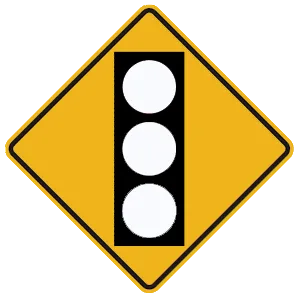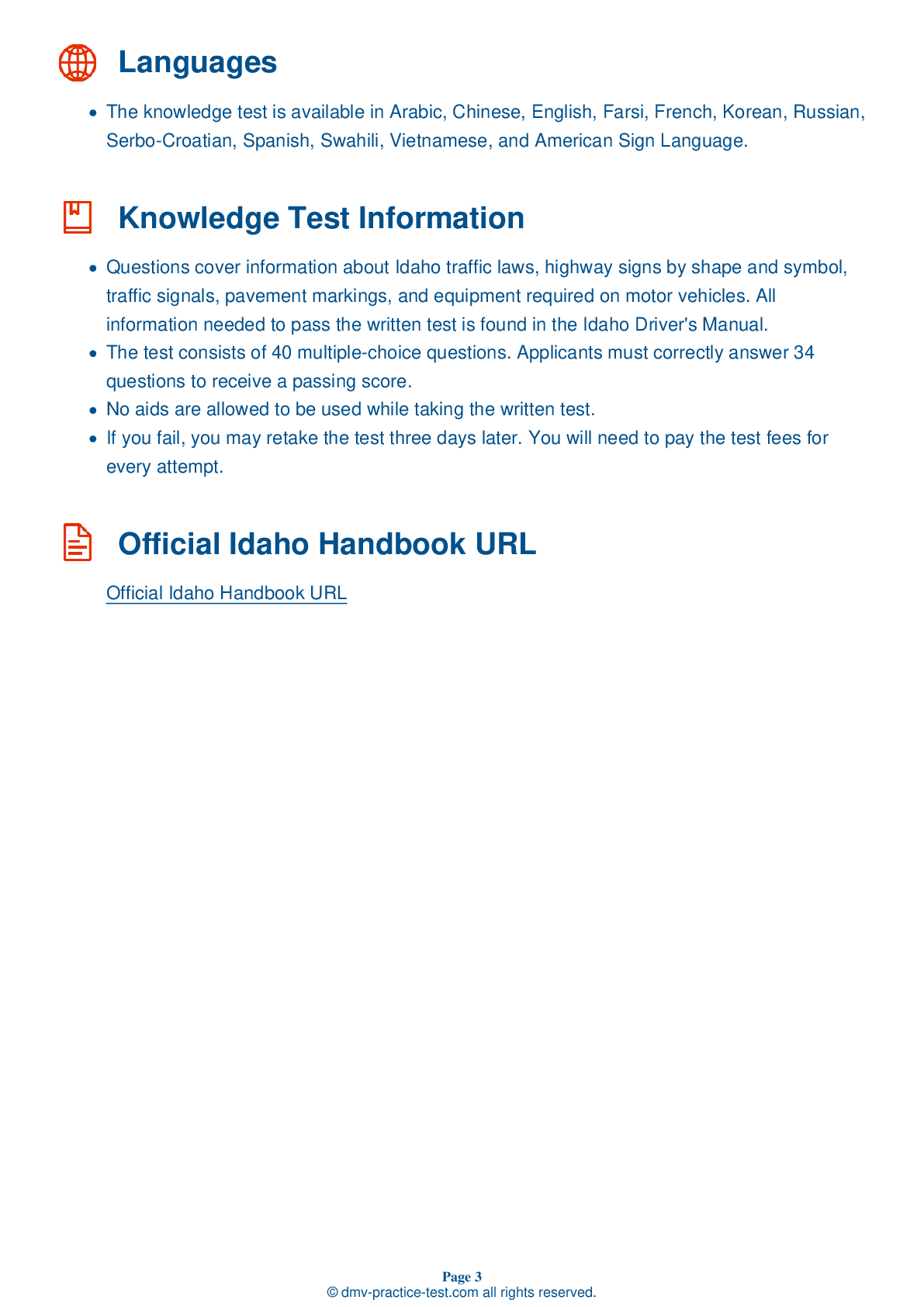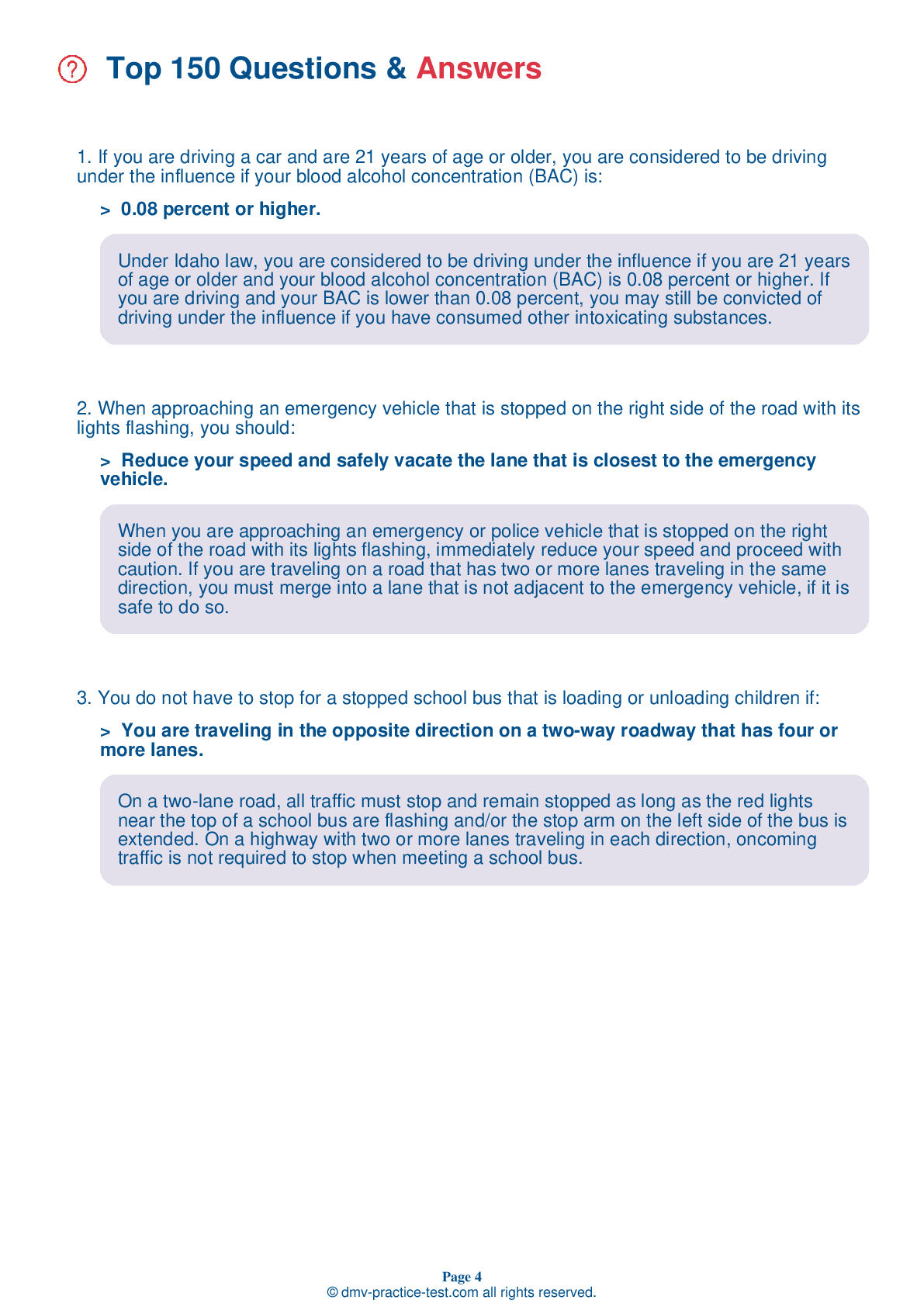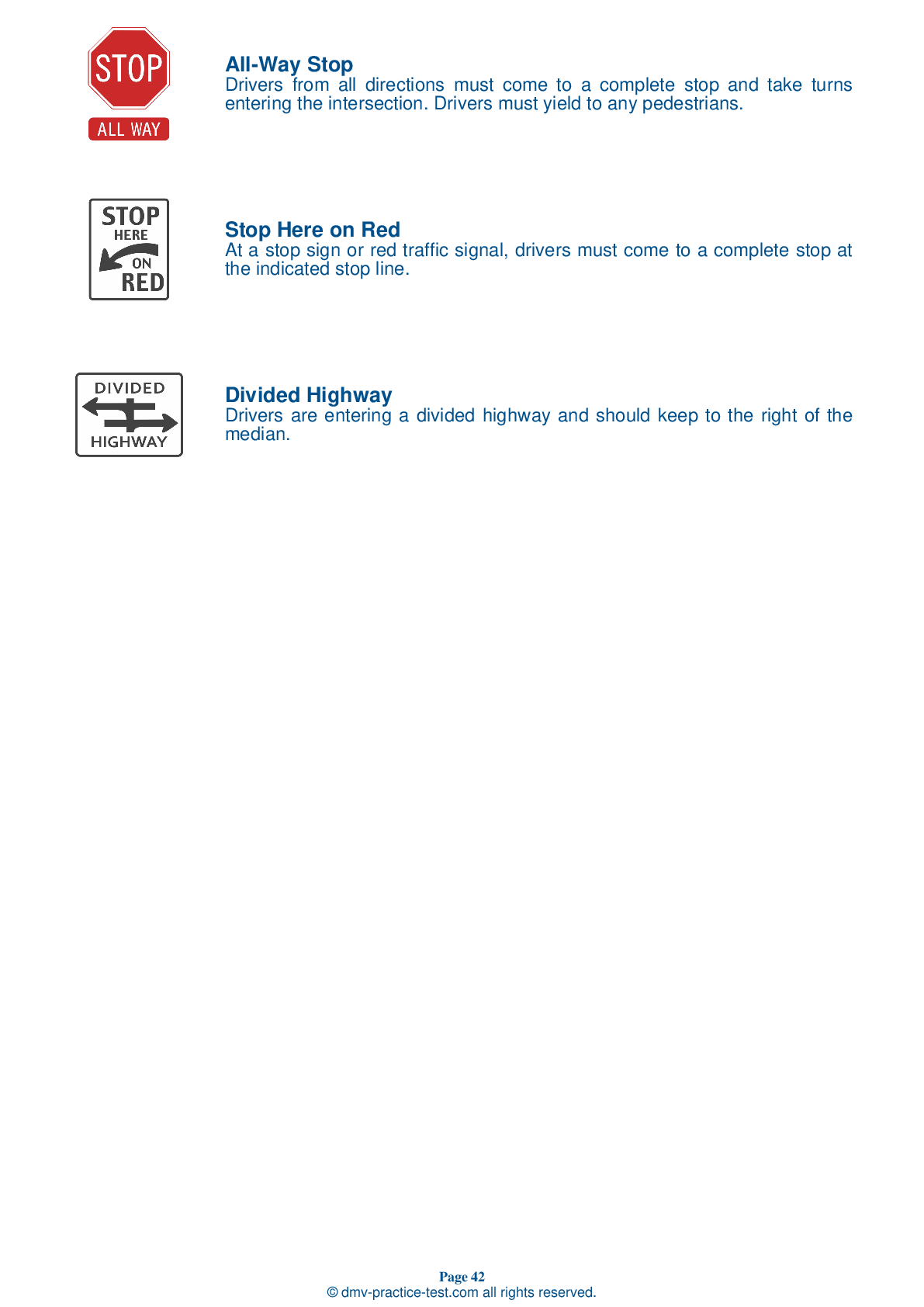FREE Idaho DMV Practice Test #24
This set of Idaho DMV practise tests has been updated for January 2025. It includes questions based on the Idaho Driver Handbook's most significant traffic signs and regulations for 2025. Use actual questions that are very similar (often identical!) to the DMV driving permit test and driver's licence exam to study for the DMV driving permit test and driver's licence exam.
On the practise exam, each question gets a tip and explanation to help you remember the concepts. The written component of the official DMV test will include questions about traffic rules, traffic signs, and driving statutes, as well as information from the Driver Handbook.
To obtain a passing grade, you must correctly answer 34 of the 40 questions. Take our DMV practise exam to help you prepare for your Idaho instruction permit or driver's licence.
The DMV exam is available in several languages.
Using any kind of testing assistance will result in an automatic fail, and the DMV may take additional action against your driver's licence, so stay away from it.
1 . When stopped for a traffic violation or at an equipment check, the driver must produce:
When stopped for a traffic violation or at an equipment check, the driver is responsible for producing their license, proof of registration, and proof of insurance. Drivers are required to have all three of these documents in a vehicle when it is being driven.
2 . If you need to stop quickly and your vehicle is not equipped with an Anti-Lock Braking System (ABS), you should:
Pumping the brakes is generally the best way to stop a car in an emergency. The car will stop quickly and you will also be able to continue steering.
3 . Two solid white lines painted across a traffic lane show the boundaries of a crosswalk. As a driver, you should know that:
Crosswalk lines show pedestrians where to safely cross a road or street. Crosswalks may be marked by horizontal lines, vertical lines, or a combination of the two. You must always stop for pedestrians who are in a crosswalk.
4 . From top to bottom, the following is the proper order for traffic lights:

On a traffic signal arranged vertically, red is always on top and green on the bottom. When arranged horizontally, red is always on the left and green on the right.
5 . This sign means:




